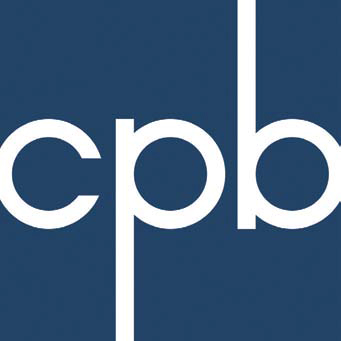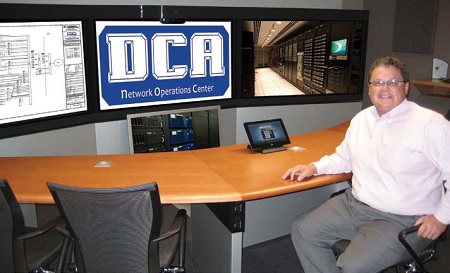Streamlining Production at Public TV
JACKSONVILLE, FLA.—I’m an engineer by profession, but I want to put on an editorial hat and write about an important matter that is, in many ways only tangentially about technology.
I’m talking about master control… literally (to a degree) and figuratively to make my point.
As public broadcasters, our mandate is to deliver high-quality programming with a local flavor that would not otherwise be available to the communities we serve. However, a large portion of our funding to do that comes from federal grants, small portions of state and local tax revenue, plus corporate and individual support, all of which are subject to the ongoing pressures that budget builders face.

While financial support for capital purchasing diminishes, we are expected to deliver more content to multiple, ever-diverse platforms to keep faith with those who have not only funded us, but rely on PTV-distributed content for specialized entertainment, news and information.
That content emanates from a master control room, which is the heart of any broadcast operation. The difficulty is that there are now too many individual MCR’s, which is why I believe it would be more efficient to centralize those functions among station groups.
CONSIDERING CONSOLIDATION
As much fun as they were to specify, install and operate, the majority of master control rooms installed in the early 2000s are now approaching end of life. From my point of view, I see no financially sound way to continue to support—or rebuild— each of them to meet modern demands.
Many PTV stations are struggling to stay financially viable and, as a result, on air. We can waste time wringing our hands over the best way to provide real-time linear feeds to transmitters, but that ignores the elephant in the room, which is the fact that our future hinges on our willingness to play nice with each other, not accumulate toys we can no longer afford.
The professional video industry's #1 source for news, trends and product and tech information. Sign up below.
Each local PTV broadcaster likes to think it is unique. The truth is that we are much the same. We distribute much of the same content and make many of the same decisions with similar schedules. We also face the same challenges.
What we do is not who we are. What I mean by that is, rather than being identified as “people who make television,” we are better defined as an indispensable community asset. I recognize that for many, that’s not necessarily an easy distinction to make. Visitors to our facilities, be they politicians, local dignitaries or members of the public, want to evaluate their asset, but for many that means getting their picture taken in the MCR. That’s great for the PR department but does little to illustrate the hard technical scrabble to deliver the tangible assets (i.e., the programming) taking place just beyond the control room door. Very few visitors care about the technical route the content takes to arrive in their homes as long as it gets there.
An understanding of how the MCR works and what it costs to drive it is lost on most. Therefore why, I submit, does every station need one? Why not combine MCRs into a single hub among a station group and save lots of money? Seems an easily won argument to me.

Duane Smith PTV stations can leverage advantages they have over commercial stations by pooling and exploiting their assets. For example, the majority of PTV stations do not produce live news, which is typically a cash-hungry endeavor; and our programming schedules are not overly dynamic. Those similarities are advantages that can be streamlined to the benefit of our type of broadcast operations and, ultimately, our respective audiences.
Many commercial broadcasters have already taken steps to control more and more video streams from centralized hubs. PTV station groups can do the same. The playout workload alone across a station group can be dramatically reduced. Moreover, aggregating content enables an operations center to be much more agile with that content once delivery processes to new distribution models are perfected. It also conserves substantial capital and operating expenditures by not having to capture, manipulate and store identical content in multiple locations.
GRASSROOTS LEVEL
Fortunately, there has been a recent groundswell among local PTV station management and engineering teams to discuss and, in some cases, start implementing centralization plans. It’s not a “top down” initiative as is more typical in larger commercial groups, but a grassroots “uprising” by broadcast professionals with feet on the ground in their local communities.
This realization is perhaps best manifested by describing where things stand where I am privileged to work, JCT Services LLC, a subsidiary of WJCT Public Broadcasting in Jacksonville, Fla.
WJCT is a charter member of a partnership that includes 11 public television stations that are currently centralizing their master control and network operations centers in Jacksonville as part of an initiative by the not-for-profit Digital Convergence Alliance. The new facility will initially serve WTTW in Chicago; MPTV, Milwaukee; KERA, Dallas; WPBT, Miami; WUCF, Orlando; WJCT, Jacksonville; WFSU, Tallahassee; WILL, Urbana Ill.; WBCC, Cocoa; WEDU, Tampa; and WPBA, Atlanta. The DCA is actively campaigning for more stations to join the alliance. The more that join, the more cost savings can be achieved by all of them. The Corporation for Public Broadcasting, which provided the initial funding for the project, has already stated that it foresees savings of $15-$20 million over 10 years.
The DCA has a wider aim than just being an operational hub where content is aggregated and disseminated. It is a community “white board” where ideas and opportunities are shared and built upon, utilizing the DCA’s network operations center as the infrastructure where such initiatives are developed and implemented to the benefit of the alliance’s constituents.
I liken the collaborative nature of this approach to a “statistical multiplexer.” The more inputs (users) it has, the more efficient it becomes. It is critically important to understand that highly productive partnerships can be built by forming meaningful relationships within the public broadcasting system. A centralized operations center can leverage the respective skill sets of users to expand its services—and bargaining power—therefore becoming a more powerful coalition.
For example, if one user has a satellite uplink, it can offer that service to the group. If another user is blessed with a top-flight graphics department, it can offer those services at a competitive rate. It doesn’t take much imagination to see all sorts of advantages.
When considering joining a combined master operation, keep in mind that the decision making should not be focused solely on master control. It has to be about evaluating the strategic and tactical advantages offered by being a part of a group of likeminded folks working toward common goals.
Duane Smith is vice president for the Network Operations Center at JCT Services.
